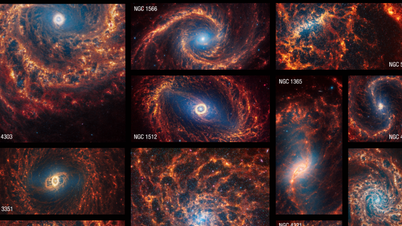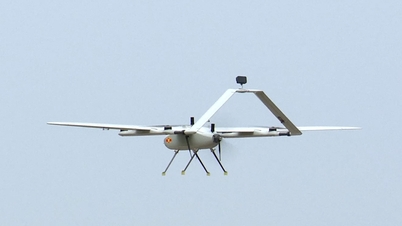Earlier this year, a team of German scientists discovered an unusual peak of the radioactive isotope beryllium-10 on the Pacific Ocean floor.
This isotope forms when cosmic rays collide with Earth's atmosphere, then fall into the ocean, settle, and adhere to the Earth's crust.
Normally, this “beryllium-10 rain” occurs fairly regularly around the globe, so its trace in the rocks should also be relatively uniform.
However, a study in the journal Astronomy & Astrophysics found a spike in the concentration, dating back to about 10 million years ago.
Scientists believe that a star near Earth exploded as a supernova at that time.
To test this hypothesis, another research team studied the stars.
They used data from the European Space Agency's (ESA) Gaia survey to trace the orbits of the Sun and 2,725 nearby star clusters over the past 20 million years, to calculate the probability of a supernova occurring in those clusters.

The beryllium-10 peak was discovered in the ferromanganese crust at the bottom of the Pacific Ocean , formed between 9 and 12 million years ago (Photo: Nature Communications).
The results showed that there was a 68% chance that a star exploded within 326 light-years of the Sun, within 1 million years of the beryllium-10 peak.
The team also identified 19 star clusters with a greater than 1% probability of supernovae at this distance, coinciding with the timing of the anomaly.
Notably, the study also ruled out direct life-threatening radiation effects.
Estimated distances suggest that even a relatively powerful Type II supernova would primarily affect atmospheric chemistry rather than global ecology.
However, if the beryllium-10 peak appears in only a few areas of the Pacific, the cause could be a change in ocean currents, causing localized concentrations of the radioactive material.
Conversely, if the origin is cosmic, similar increases should be detected across the oceans of the same age.
Scientists say sampling and analyzing sediments from various areas will help unravel this mystery.
Further sampling from seafloor archives around the world will be needed to determine whether this anomaly is a local Pacific signal or a truly global event.
If confirmed, it would be the oldest isotopic evidence of a nearby supernova impact on Earth's atmosphere.
Source: https://dantri.com.vn/khoa-hoc/dau-vet-duoi-day-bien-he-lo-vu-no-sao-gan-trai-dat-hang-trieu-nam-truoc-20251012235259991.htm





![[Photo] General Secretary To Lam attends the opening of the 1st Government Party Congress](https://vphoto.vietnam.vn/thumb/1200x675/vietnam/resource/IMAGE/2025/10/13/1760321055249_ndo_br_cover-9284-jpg.webp)


































































































Comment (0)